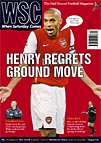 The SFA are looking at restructuring non-League football. Neil Forsyth reports
The SFA are looking at restructuring non-League football. Neil Forsyth reports
As seven non-League clubs take to the field in the Scottish Cup second round on December 9, they will signify more than the ever-lessening gap between the cream of Scottish non-League and the nether regions of the professional ranks. Their appearance and the now annual forays of such outfits to this stage and beyond seem to have finally forced football here to confront its increasingly unjustifiable closed-shop status.
In early 2006, the Scottish FA formed a sub-committee to look at reshaping their premier cup competition. Though no plans have been officially confirmed, the indications are that – from as early as the 2007-08 season – the Scottish Cup will be open in its earliest rounds to all of Scotland’s senior non-League clubs as well as the top “junior” outfits.
This last point is the most controversial. Junior football exists in Scotland as a unique, parallel footballing universe, where popular and well established league systems are run away from the auspices of the SFA. A number of these teams, particularly in the junior heartland of Ayrshire, attract considerable support and the top junior clubs have often bettered Scottish League members in financial approaches to ageing professionals.
There have been some unsuccessful attempts to bring them into the fold, but perhaps the lure of the Scottish Cup (and the suggestion is that four junior sides would be allowed into the first round proper) could finally see the unlikely union take place.
And yet this isn’t even the most significant prize that could be on offer. Among the coverage of the potential reshaping of the Scottish Cup was a quote from a spokesman that could be seismic in implication. “The general desire within the SFA is to move towards a pyramid system,” he announced, “and this is just one option being considered to involve more teams in the national competitions.” Those in power, therefore, see the tinkering with the Scottish Cup as a precursor to the league system finally incorporating the novelty of promotion and relegation.
And here’s the problem, that sudden appearance of a trapdoor being an unlikely vote winner among the leagues’ members, with the usual comparison of turkeys backing Christmas applying. For the good of the national game, however, it has to be hoped that the short-term outlook of the traditionally lowly clubs would not be enough to halt the revolutionary whims of the SFA.
Scotland’s non-League setup may be a convoluted and untidy proposition, but it also bears clubs with the fan base and dynamism to breathe new life into the decaying bottom division, where crowds are regularly in three figures and player’s part-time salaries often in two. Swathes of Scotland would also have the opportunity to see League football for the first time – such as east Ayrshire, north Fife and at least one more town in the Highlands – while the arrival of new clubs and the energy of true competition could reinvigorate the league system.
All of which is likely to make little appeal to the directors of those clubs who have spent decades, if not a century, counting pennies and strangling talk of a pyramid system at birth because of the doom-laden threat of relegation and then, most likely, oblivion.
It can only be hoped that common sense will prevail and at least the slightest chink of aspiration – one up, one down – will be added to the professional game. First, though, the SFA have to guide through their ambitious Scottish Cup project, with all the various difficulties that incurs.
Their case can only be helped by the seven non-League teams battling in the Cup’s second round. And if any of them – from Highland League leaders Buckie Thistle to the proud students of Edinburgh University – can dispatch their League opponents, then maybe the historical opening up of Scottish football will have come a little closer.
From WSC 239 January 2007. What was happening this month